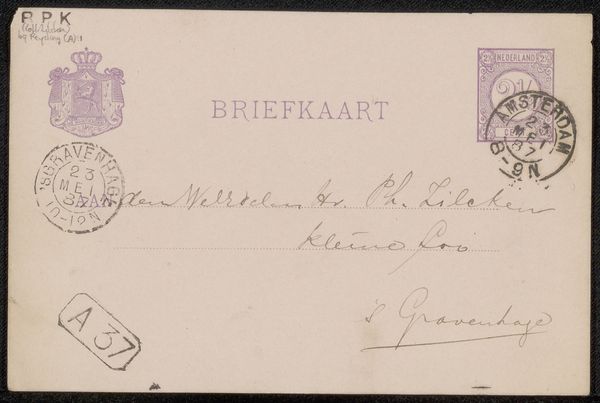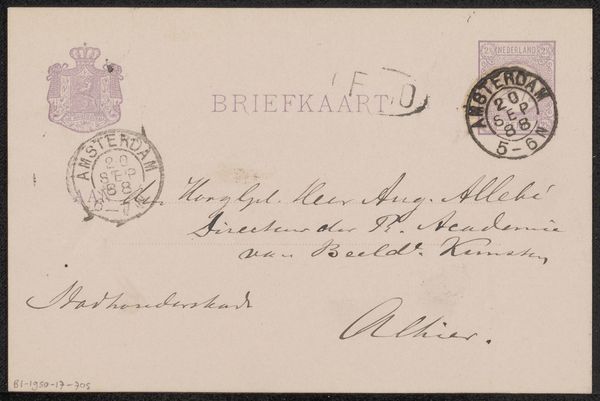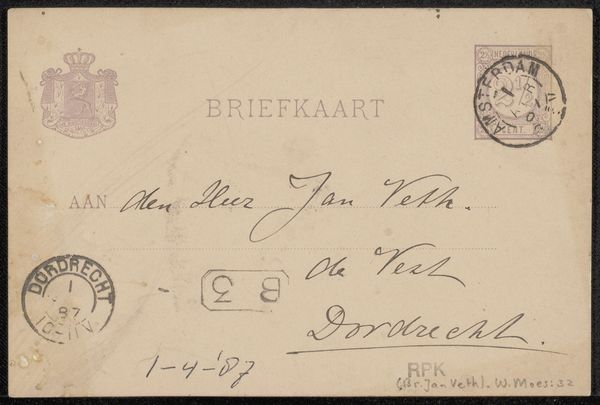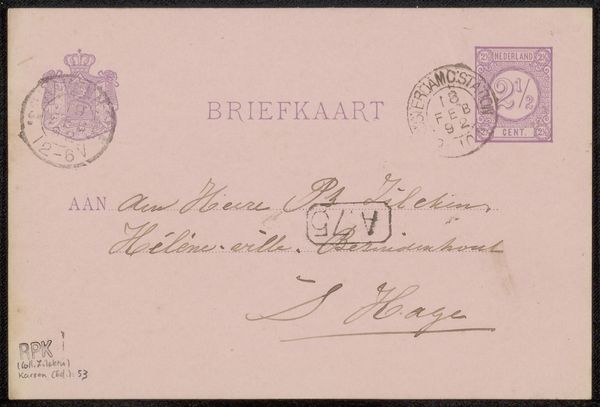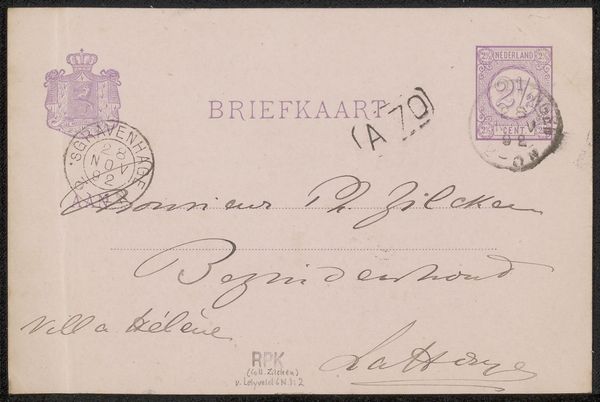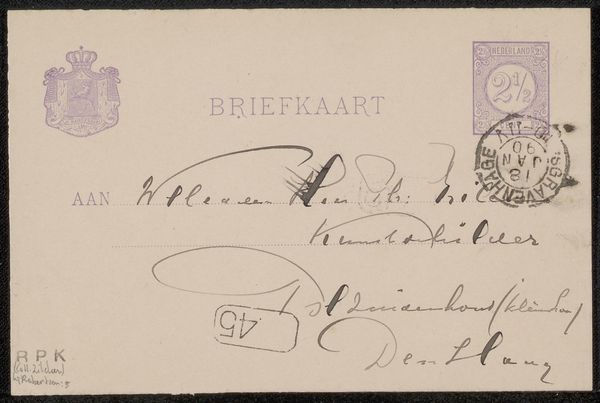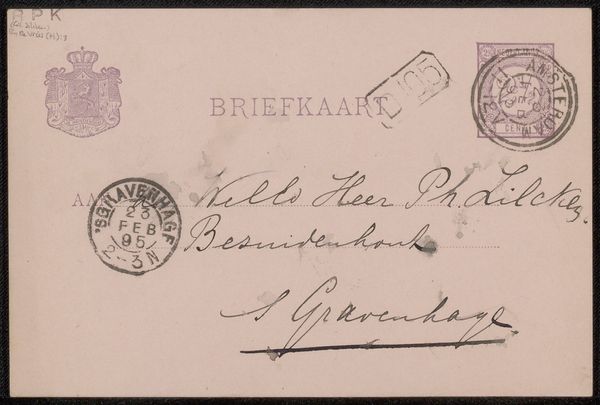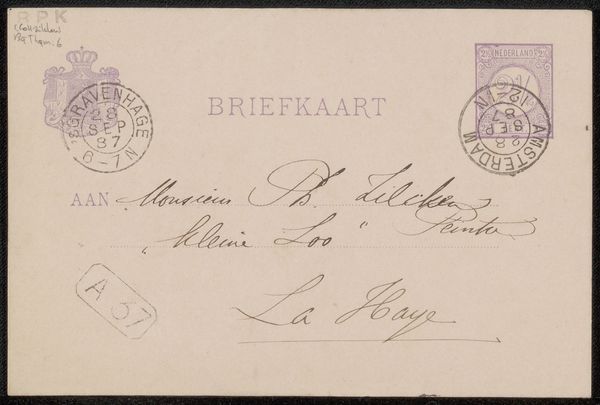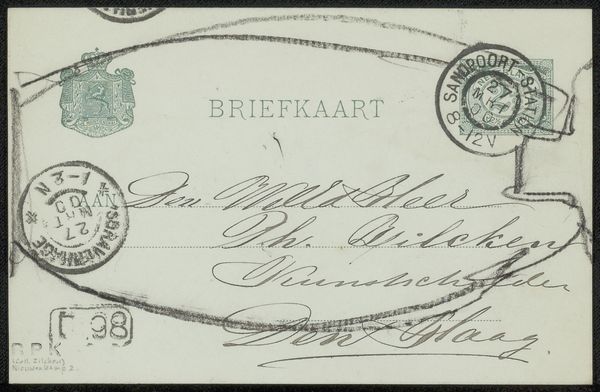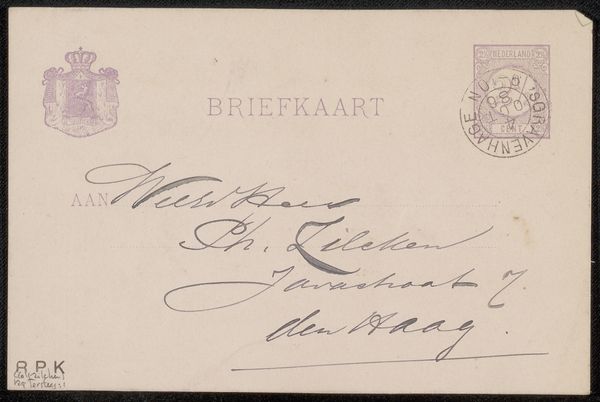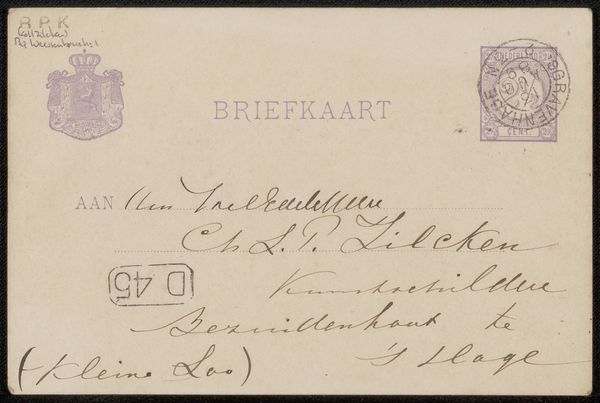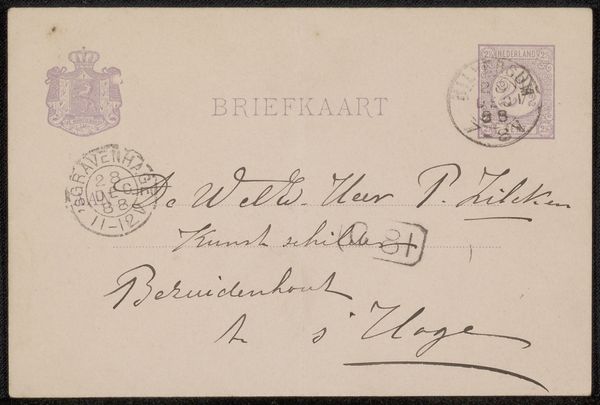
drawing, paper, pencil
#
portrait
#
drawing
#
pen sketch
#
incomplete sketchy
#
paper
#
personal sketchbook
#
sketchwork
#
ink drawing experimentation
#
pen-ink sketch
#
pencil
#
pen work
#
sketchbook drawing
#
storyboard and sketchbook work
#
sketchbook art
Copyright: Rijks Museum: Open Domain
Curator: What strikes me immediately about this postcard—Briefkaart aan Jan Veth— possibly created between 1891 and 1897 by Eduard Karsen, is the intimacy of it. Editor: I see it, a fleeting moment captured on paper. It feels very raw, almost unfinished. Just pencil and ink, immediate. Curator: Yes, the media speak to its function; this wasn’t meant to be a grand statement but something functional and quick. Think about Karsen's process here: readily available, portable materials–postcard, pencil, ink – reflect art production intersecting with daily life. It dissolves boundaries between 'high art' and practical necessity. The postal stamp integrates itself graphically into the composition. Editor: And that superimposition of stamp and sketch isn't accidental; it makes it seem the portrait is being sealed and sent with royal approval; it becomes a visual motif of authenticity, if you will, or endorsement. Curator: It emphasizes art as communication and the importance of networks of artists, such as the one that tied Veth to Karsen. A way for artists to circulate work in a more direct form than gallery sales allowed at the time. This economy of exchange has historical value when examining what kind of audience Karsen and Veth catered to. Editor: Considering the incomplete nature of the portrait—almost dreamlike—could the imagery intentionally hint at aspects of Veth’s character, perhaps intellectualism or some less-than-obvious attribute? It suggests an inner life beyond a straightforward likeness. The medium adds this layer too - it being a raw personal, intimate drawing made just for Jan Veth is telling on their relationship and how Karsen may have approached painting/drawing his friends Curator: True. And how about its reception on Veth's side? This postcard wasn’t conceived within the rigid hierarchy of the Salon system, and as such, both subject and sender engaged with creating work without constraints, fostering freedom to communicate amongst themselves. Editor: Karsen's creation transcends being a mere material artifact and stands testament to friendship and an engagement with inner meaning. Curator: Exactly. Studying it tells a more complex history than looking at conventional, official artworks of the same era.
Comments
No comments
Be the first to comment and join the conversation on the ultimate creative platform.


